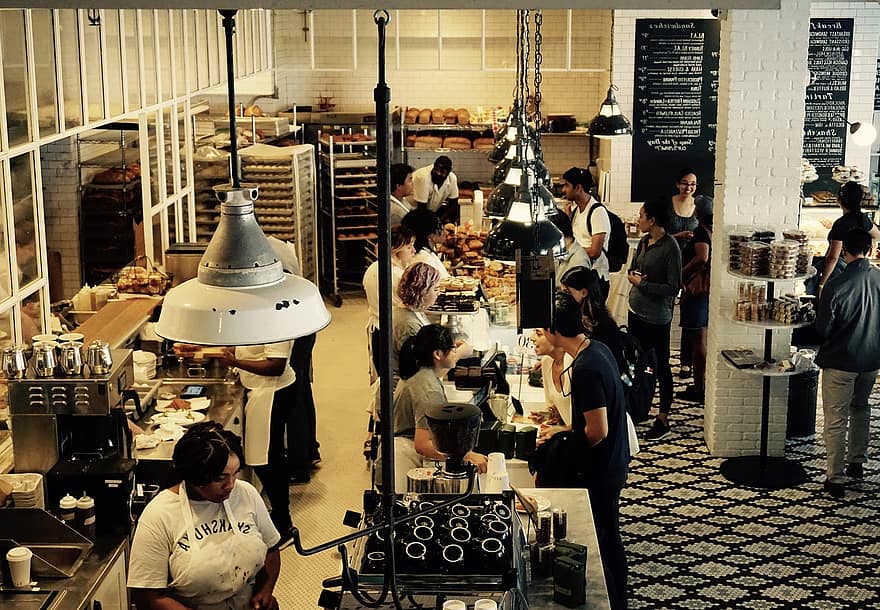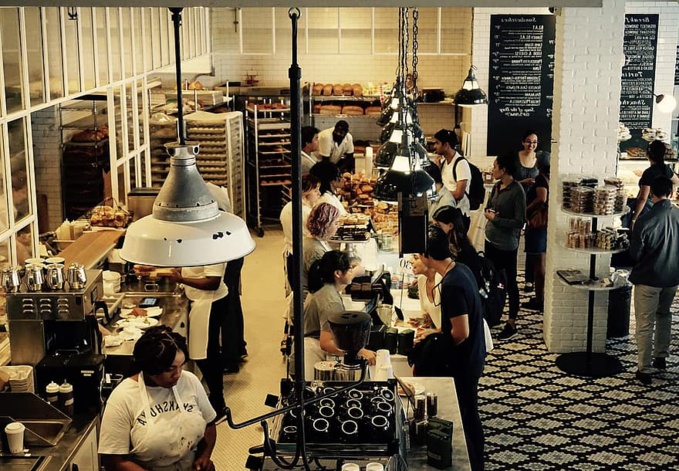Creative brief
First of all, write a brief for authors of texts, artists, designers, merchandisers and all other specialists involved in the creative accompaniment of the product. The paper should be a brief description of the concept. This document is no less important than the product or service itself.
The brief defines the target audience and describes in detail the plan for working with it. The content and principles of the concept should be clear to all parties involved: company employees must know how to use it, and the result of this work is intended to delight consumers. In other words, a product concept is an instruction that is used internally to achieve goals beyond its borders.
Creative employees of companies are, of course, able to formulate the concept of goods, but it is better if such a document is created by a leader who is responsible for the product, ideally, the company's CEO. Do not shift this work onto the shoulders of others: you have enough experience and knowledge not only in analytics, finance and operational activities, but also in the field of creative strategy.
The value of words
The main value of the aesthetic concept is its specificity, which allows you to convey your goal to the audience, fill the product with meaning, and evoke emotions. Vague descriptions are not good. For example, words such as pleasant, tasty or soft are general characteristics, while resilient, brackish or gelatinous clearly convey information. The selected words should literally bring to life the sensations that consumers will experience when using your product.
To assess the accuracy of your language, answer these questions for each word (or sentence) that you use.
1. Does the product description provide an opportunity to present exactly the same image that you imagine? Are your specifications clear enough?
2. Do words evoke strong association and recognition? Do the selected formulations relate specifically to your product? Even more powerful is not just a phrase that evokes strong associations, but the ability to patent or consolidate the wording. For instance, it so happened that IBM practically owns the verb “Think!”, and the word "search" is strongly associated with Google.
To find the right words to describe your company or products, you need to understand your audience. What exactly do people feel before they come across your product? What are their expectations regarding its qualities and advantages? Describe the experiences and feelings that you expect from a product of your production. What feelings would you like to arouse with your clients?
3. Are the words you use random or are they thought out and closely related to the sensations you want to evoke? In the product descriptions, every word should be thought out and meaningful. In an aesthetic concept, not only accurate communication of information is important, but also powerful, attractive and catchy formulations. Cliché, standard phrases and business language are not good here.
4. Do the selected formulations correspond to the general tone that you want to assign to the product and your company? Are the characteristics and aesthetic qualities of the product, as well as the values of the company, enhanced and emphasized?
Why are you here? Tell about it
Narration is more than individual, vivid phrases. This is a story about a company’s history, about the legends and myths that have developed in it, the fundamental principles, the reasons for the appearance and the direction of development. For businesses with a rich heritage, such as Tiffany or Chanel, experience and legends are part of new stories; they help build confidence in the next generation who are not as familiar with the heritage of this structure as their mothers and grandmothers.
Some relatively young companies, especially in developed industries, manage to create an exciting narrative, and due to this, the mood and desires of customers change, and demand arises. Of course, young structures fascinate us primarily with freshness, breakthrough technologies or an unusual style - and all this is due to their age. In this sense, novelty begins to look like an important advantage (something unusual and exciting), and not a disadvantage (newly appeared and unverified).
All these examples show that the way you talk about the product, the emotional message you put in the description, can determine the attitude of customers. Create trust and intimacy, arouse the desire to possess, highlight uniqueness against the background of thousands of competitors.
Based on "Aesthetic Intelligence How to Boost It and Use It in Business and Beyond" by Pauline Brown
First of all, write a brief for authors of texts, artists, designers, merchandisers and all other specialists involved in the creative accompaniment of the product. The paper should be a brief description of the concept. This document is no less important than the product or service itself.
The brief defines the target audience and describes in detail the plan for working with it. The content and principles of the concept should be clear to all parties involved: company employees must know how to use it, and the result of this work is intended to delight consumers. In other words, a product concept is an instruction that is used internally to achieve goals beyond its borders.
Creative employees of companies are, of course, able to formulate the concept of goods, but it is better if such a document is created by a leader who is responsible for the product, ideally, the company's CEO. Do not shift this work onto the shoulders of others: you have enough experience and knowledge not only in analytics, finance and operational activities, but also in the field of creative strategy.
The value of words
The main value of the aesthetic concept is its specificity, which allows you to convey your goal to the audience, fill the product with meaning, and evoke emotions. Vague descriptions are not good. For example, words such as pleasant, tasty or soft are general characteristics, while resilient, brackish or gelatinous clearly convey information. The selected words should literally bring to life the sensations that consumers will experience when using your product.
To assess the accuracy of your language, answer these questions for each word (or sentence) that you use.
1. Does the product description provide an opportunity to present exactly the same image that you imagine? Are your specifications clear enough?
2. Do words evoke strong association and recognition? Do the selected formulations relate specifically to your product? Even more powerful is not just a phrase that evokes strong associations, but the ability to patent or consolidate the wording. For instance, it so happened that IBM practically owns the verb “Think!”, and the word "search" is strongly associated with Google.
To find the right words to describe your company or products, you need to understand your audience. What exactly do people feel before they come across your product? What are their expectations regarding its qualities and advantages? Describe the experiences and feelings that you expect from a product of your production. What feelings would you like to arouse with your clients?
3. Are the words you use random or are they thought out and closely related to the sensations you want to evoke? In the product descriptions, every word should be thought out and meaningful. In an aesthetic concept, not only accurate communication of information is important, but also powerful, attractive and catchy formulations. Cliché, standard phrases and business language are not good here.
4. Do the selected formulations correspond to the general tone that you want to assign to the product and your company? Are the characteristics and aesthetic qualities of the product, as well as the values of the company, enhanced and emphasized?
Why are you here? Tell about it
Narration is more than individual, vivid phrases. This is a story about a company’s history, about the legends and myths that have developed in it, the fundamental principles, the reasons for the appearance and the direction of development. For businesses with a rich heritage, such as Tiffany or Chanel, experience and legends are part of new stories; they help build confidence in the next generation who are not as familiar with the heritage of this structure as their mothers and grandmothers.
Some relatively young companies, especially in developed industries, manage to create an exciting narrative, and due to this, the mood and desires of customers change, and demand arises. Of course, young structures fascinate us primarily with freshness, breakthrough technologies or an unusual style - and all this is due to their age. In this sense, novelty begins to look like an important advantage (something unusual and exciting), and not a disadvantage (newly appeared and unverified).
All these examples show that the way you talk about the product, the emotional message you put in the description, can determine the attitude of customers. Create trust and intimacy, arouse the desire to possess, highlight uniqueness against the background of thousands of competitors.
Based on "Aesthetic Intelligence How to Boost It and Use It in Business and Beyond" by Pauline Brown



















